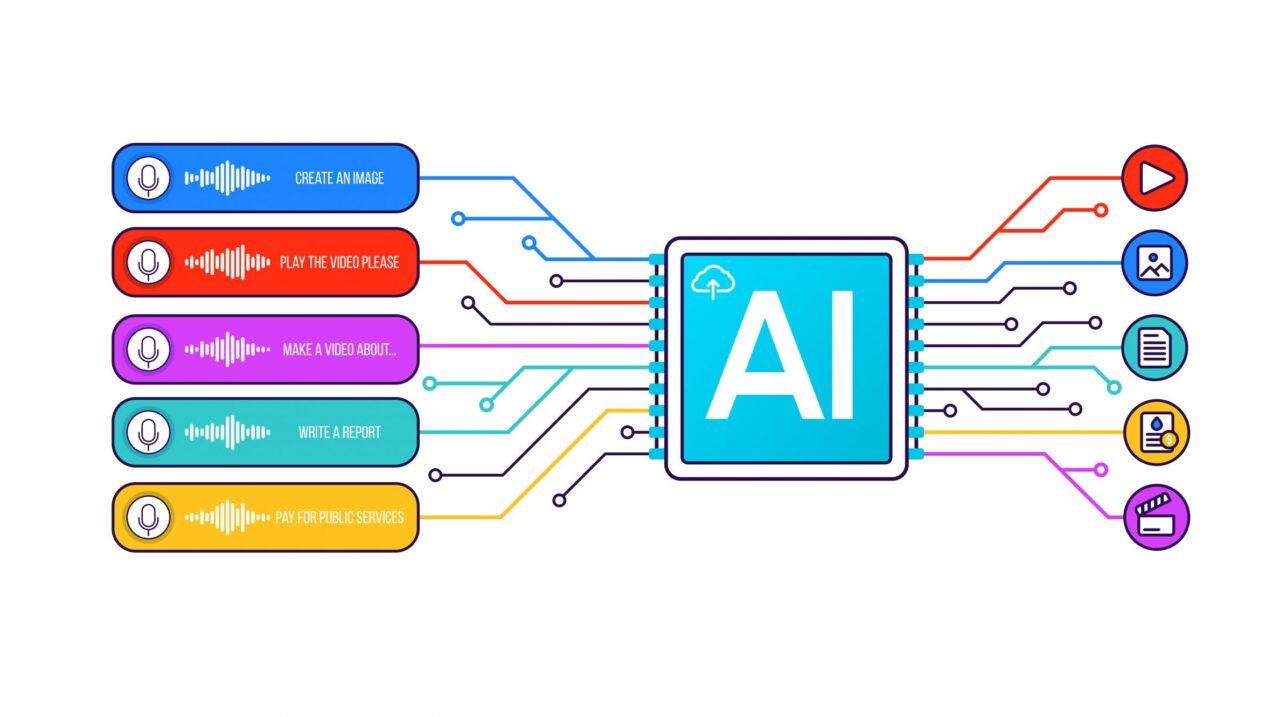Music Generation and Composition with AI

The Advent of AI in Music Generation
Since the 1950s, artificial intelligence has played a significant role in both understanding and creating music. This journey began with rudimentary algorithms and has evolved into a multifaceted industry with intelligent music systems. This progression in AI music intelligence demonstrates a substantial expansion of AI methodologies.
The Early Pioneers
The first attempts at computer-generated music appeared in the 1950s, focusing on algorithmic music creation. This era was marked by the pioneering work of individuals like Alan Turing with the Manchester Mark II computer, which laid the groundwork for research into music intelligence where computational systems could recognize, create, and analyze music.
One of the earliest milestones was the creation of ‘Illiac Suite for String Quartet’ in 1957, composed solely by artificial intelligence. This groundbreaking work was accomplished by American composers Lejaren Hiller and Leonard Isaacson using the Monte Carlo algorithm. This algorithm generated random numbers corresponding to certain musical features like pitch or rhythm, constrained within the boundaries of traditional musical theory and statistical probabilities.
Innovations in Music and AI
Innovators like Iannis Xenakis further expanded the field in the early 1960s. Xenakis, a composer and engineer, used stochastic probabilities in his music creation. He utilized computers and the FORTRAN language to interweave multiple probability functions to determine the overall structure and other parameters of his compositions, treating each instrument as a molecule undergoing its own stochastic, random process.
The Evolution of AI in Music Composition
The role of AI in music has continuously evolved, serving as both autonomous creators and supplementary guides in the music industry. This duality is evident in intelligent sound systems specialized in generating original pieces like the Illiac Suite and in breaking down the science of sound as demonstrated in Xenakis’s stochastic processes.
David Cope and the Emergence of EMI
In the 1980s, David Cope’s work with his Experiments in Music Intelligence (EMI) marked a significant evolution. Cope believed that computer composition could encompass a deeper understanding of music through methods like deconstruction, identifying style signatures, and compatibility through recombinancy. His concept of recombinancy involved combining and modifying elements from previous works to create new pieces of music, a technique also used by many great composers.
Cope’s work laid the foundation for many current AI models. These models encode music and its attributes into databases, then extract and categorize musical segments using pattern matching systems. This ‘regenerative’ construction of music, using augmented transition networks to produce new musical outputs, is reminiscent of many current neural networks that compose music today.
The Mechanics of AI-Driven Music Creation
The evolution of AI in music composition has been monumental, particularly with the advent of deep learning and reinforcement learning technologies. Initially pioneered by Alan Turing in 1951, AI music composition has come a long way, experiencing a renaissance in recent times due to advancements in machine learning and AI. Tech companies are now significantly investing in this domain, with AI being employed not only in creating music but also in assisting musicians in their creative processes.
Deep Learning and AI in Music
Deep learning, a subset of machine learning, has revolutionized the field of music generation. Projects like Google’s Magenta and IBM’s Watson Beat exemplify the capabilities of AI in this arena. These systems use deep learning technology for composing original music, offering a cognitive cloud-based program for audio generation..
AI in Music Streaming and Production
AI’s role in music streaming and production has been transformative. Streaming services like Endel, Brain.fm, and Aimi use AI to generate never-ending playlists that adapt to the listener’s mood, activity, and time of day. The integration of AI in these services is so seamless that it’s beginning to blur the lines between traditional and functional music, with some labels collaborating to create AI-enhanced versions of popular tracks.
Spotify, for instance, has launched AI DJ and Daylist features that curate personalized playlists based on user preferences and feedback. While these playlists currently draw from existing songs, the future may see a blend of AI-generated and human-created content.
AI-Generated Covers and Royalty-Free Music
One of the notable applications of AI in music is the creation of AI-generated covers. This trend has gained massive popularity, especially on platforms like TikTok. However, it also raises important legal considerations regarding rights and royalties.
Artists like Grimes are exploring new business models by allowing others to use AI to generate songs with their voice, thereby creating a passive income stream. This approach highlights the potential for AI to complement rather than replace human artists.
Moreover, AI is making significant strides in the realm of royalty-free music. Tools like Beatoven, Soundraw, and Boomy are enabling content creators to easily generate unique, royalty-free tracks, customizable to their specific needs. These tools are democratizing music production, making it accessible to a wider audience beyond professional musicians.
Creative Processes in AI Music Generation
The intersection of AI and human creativity in music composition is a dynamic and evolving space. The core question often revolves around whether AI-generated music supplements or supplants human creativity. AI technology has reached a point where it can create music that is algorithmically generated and indistinguishable from human-created music. However, experts emphasize that AI cannot replace the human element inherent in music creation. Music, being a deeply emotional and personal expression, eludes the full grasp of AI’s capabilities.
AI Complementing Human Creativity
AI-generated music can complement human creativity by enabling musicians to experiment with new ideas and sounds. This collaboration between AI and human creativity is seen as a tool that offers suggestions and inspiration, pushing the boundaries of conventional music composition. The use of AI in this manner is particularly potent in overcoming creative blocks commonly encountered by artists. It allows for an exploration of musical possibilities that might not occur in a purely human-centric process.
The Duality of AI in Music
The duality of AI in music lies in its ability to democratize music creation while also posing challenges to maintaining the uniqueness and personal touch of human-created music. AI-generated music has simplified music production to the extent that non-professionals can create music, fundamentally changing the landscape of the music industry. However, there is a concern about the overuse of AI in certain sectors, such as advertising and stock music, which could lead to a homogenization of musical styles and reduction in originality.
Ethical and Artistic Considerations
AI-generated music is not inherently good or bad; its value and impact depend on how it is utilized. It has the potential to enhance human creativity by introducing new sounds and compositions. Yet, if misused, AI can lead to a dilution of artistic originality and raise questions about copyright and ethical creation. The coexistence of AI-generated and human-created music is a nuanced balance, requiring careful consideration of both artistic integrity and innovation.
Real-World Applications and Examples
AI’s impact in music composition is evident through various real-world applications that are redefining the landscape of music creation and consumption. These applications showcase the versatility and potential of AI in enhancing the creative process in the music industry.
Innovative Applications in Music Generation
Google’s MusicLM is a prime example of an AI tool that generates songs from simple text prompts. Similarly, Paul McCartney used AI to extract John Lennon’s voice for a new Beatles track, demonstrating AI’s ability to resurrect and collaborate with voices from the past. Meta’s MusicGen, an open-sourced music generation model, turns text prompts into quality samples, indicating the growing accessibility of AI in music creation.
AI in Streaming and Personalization
Generative AI is significantly impacting the music streaming space. Apps like Endel, Brain.fm, and Aimi generate never-ending playlists that adapt to the listener’s mood and activity. This functional music is starting to converge with traditional music, suggesting a future where AI might generate more conventional music with vocals, transforming the music streaming experience. Spotify’s AI DJ and Daylist are prime examples of personalized, auto-generated playlists, showcasing AI’s role in curating music experiences based on individual preferences.
AI-Generated Covers and Royalty Issues
AI-generated covers have become a popular application, with the AI cover industry experiencing exponential growth on platforms like TikTok. However, this area faces legal challenges, especially concerning rights and royalties. Some artists, like Grimes, see an opportunity in AI music by allowing others to create songs using AI clones of their voices, thus generating passive income.
Infrastructure and Tools for AI Music
The development of infrastructure to support AI in music is underway. Artists now have tools to store custom voice models, track AI covers, and understand monetization across tracks. AI allows artists and producers to experiment with different lyrics and collaborations, enriching the creative process.
AI in Royalty-Free Music Production
AI-generated music is revolutionizing the production of royalty-free music. Tools like Beatoven, Soundraw, and Boomy allow content creators to generate unique, royalty-free tracks, overcoming the limitations of traditional stock music libraries. These tools offer customization options like genre selection, mood, and energy level, catering to a wide range of creative needs.



 Jun 14,2024
Jun 14,2024  By Julien Gauthier
By Julien Gauthier